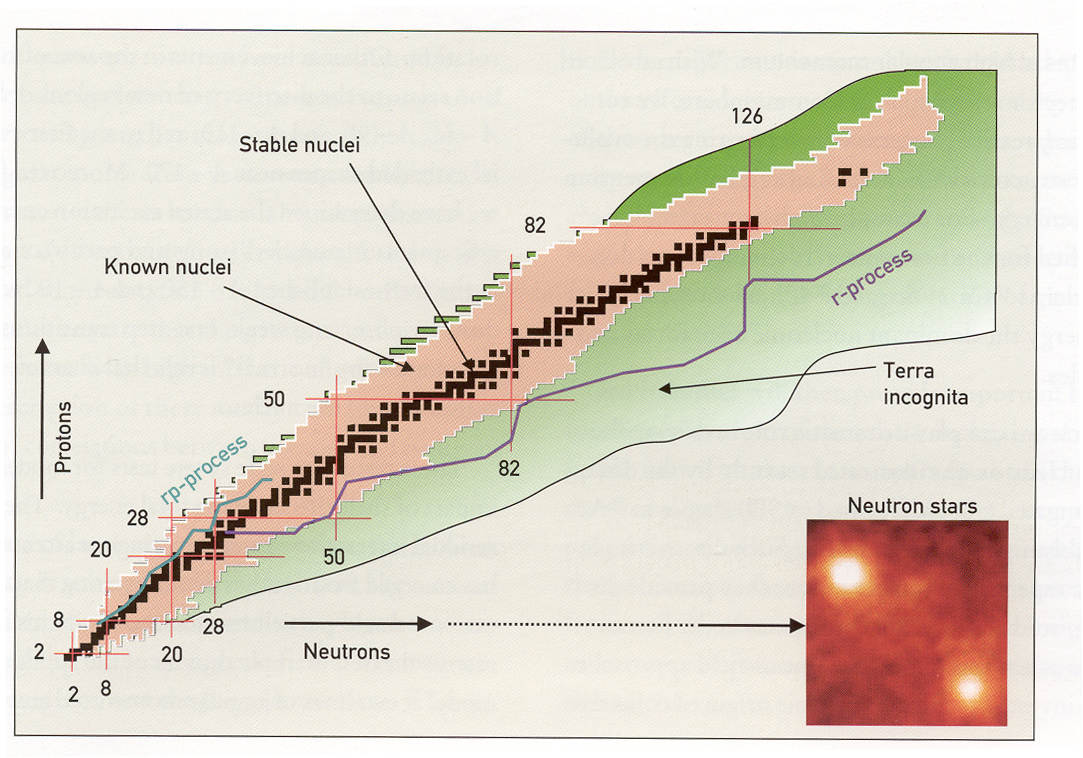Exploring the Nuclear Landscape

One aspect of exotic nuclei addressed by this research program is study of nuclei throughout the nuclear landscape to the limits of stability. The figure shows the nuclear landscape that defines the territory for nuclear physics research. The black squares represent stable plus very long-lived nuclei that define the valley of stability. The pink region designates the range of unstable nuclei that has been explored by reactions employing stable nuclei by addition or removal of neutrons or protons. Many thousands of radioactive nuclei far from the valley of stability remain to be explored; this "terra incognito" is indicated in green. The explorable nuclear landscape is bounded by the proton drip line to upper the left and neutron drip line to the bottom right, both shown by thin black lines. The anticipated paths of astrophysical processes leading to nucleosynthesis are the r-process (purple line) and rp-process (turquoise line). The red lines show the magic numbers for the valley of stability.
Several important open questions will be addressed by exploring the nuclei out to the limits of the nuclear landscape. Examples are: determine the limits of nuclear existence; probe nuclear properties at extreme neutron to proton ratios where the binding is weak and unusual phomena occur including breakdown of magic numbers; and probe the nuclear structure as a function of neutron-proton ratio, excitation energy, and spin to elucidate the remarkable simplicities and regularities manifested by the complicated many-body nuclear system. Such studies are the key to development of improved mean field theories of the nucleus that will have strong predictive power throughout the nuclear landscape from stable to the limits of stability. Such improved mean field theories are essential to the understanding of nuclear structure and to many applications of nuclear science. They also are crucial to the understanding of the origin of the elements and the evolution of the Cosmos.